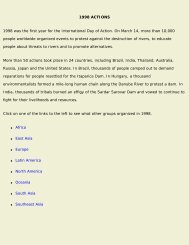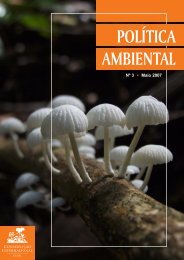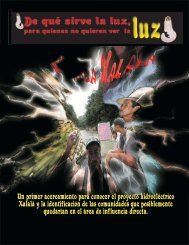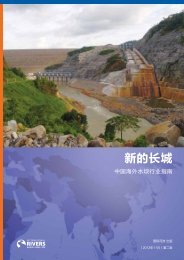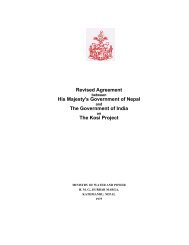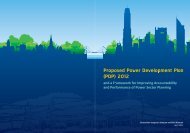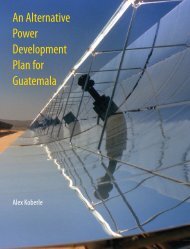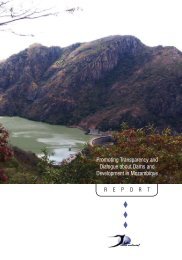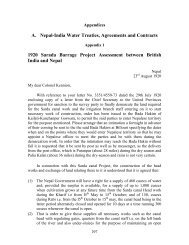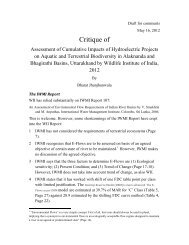Nam Theun 2 Trip Report and Project Update - BankTrack
Nam Theun 2 Trip Report and Project Update - BankTrack
Nam Theun 2 Trip Report and Project Update - BankTrack
You also want an ePaper? Increase the reach of your titles
YUMPU automatically turns print PDFs into web optimized ePapers that Google loves.
<strong>Nam</strong> <strong>Theun</strong> 2 <strong>Trip</strong> <strong>Report</strong> <strong>and</strong> <strong>Project</strong> <strong>Update</strong>Household Income Target will be reached by thebeginning of year 5 of the Resettlement Period, asrequired by the Concession Agreement” (PoE, 11th<strong>Report</strong> , p. 11). The Panel of Experts also warns that“for a range of reasons, the forestry <strong>and</strong> agriculturallivelihood programs are unlikely to meet their originallyplanned targets before impoundment” (PoE, 11th<strong>Report</strong>, p. 9).Due to the poor quality of soil on the Plateau, NTPChas had to ab<strong>and</strong>on the agriculture plans for resettlersthat were outlined in the 2005 NT2 SocialDevelopment Plan. NTPC is working on an agro-ecologicalapproach for the .66 hectare plot allocated toeach household which “involves 2-3 years of soilimprovement activities, such as planting only one-thirdof the agricultural plots (preferably with vegetables butrice is also an option) <strong>and</strong> the other two-thirds in pasture<strong>and</strong> selected cover plants. This is then rotated.”NTPC says it is also testing borehole irrigation systemsfor groups of farmers <strong>and</strong> will consider differenttypes of irrigation systems depending on the featuresof each resettlement site.According to NTPC, villagers will now have an additionalthree hectares per family allocated (<strong>and</strong> titled)for rain-fed direct mulch cropping in the communityforest area. Another five hectares per family would beavailable as a combined forestry/forage area. NTPCsays, “This combination has already been trialed <strong>and</strong>has found to be beneficial both for forage production<strong>and</strong> forestry plantation.” However, the Panel ofExperts notes:While the switch during 2006 from the Pilot Villagesystem to the New System is more likely to be culturally,economically, institutionally, <strong>and</strong> environmentally sustainable,sufficient income from the crop agriculturalcomponent can not be expected until 2009 <strong>and</strong> beyonddue to the time required to improve soil productivitythrough a mulch based cropping system (DMC) <strong>and</strong>because of less emphasis on irrigation than intended inthe Social Development Plan (PoE, 11th <strong>Report</strong>, p. 11).While the allocation of additional l<strong>and</strong> <strong>and</strong> the introductionof a more sustainable approach are welcome,concerns <strong>and</strong> questions remain about the new agriculturalplans. How does the l<strong>and</strong> allocation affect otheruses of the community forest area? How long will ittake for the system to provide villagers with income?What is the marketing strategy for the products villagerswill grow? Will all unexploded ordinance (UXO)be cleared from the areas of the drawdown zone thatvillagers are expected to cultivate? NTPC should disclosethe agricultural plans <strong>and</strong> marketing studies thatanswer these questions.Buffalo reductionVillager guarding his buffalo on the Nakai Plateau.Photo by Henrik Lindholm, SwedWatch.Buffaloes are critical assets for villagers. As a Done villagernoted, “The most important thing in our life isbuffalo. If we want to buy something, we can sell buffalo.If we need to buy rice, we can sell buffalo.” Fornow, many villagers keep buffalo in their old villages26




